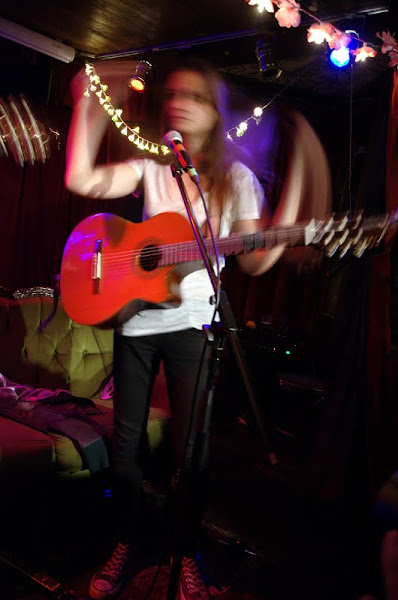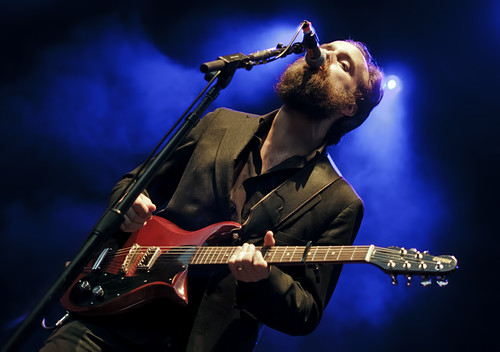I've written before about low-light situations, and how challenging and frustrating they can be. Electronic camera noise is certainly a big contributor to low-light images turning out ugly, but there are other factors that can be detrimental to the sharpness of images, too. In this post I want to talk about motion, and how understanding two different sources of motion can produce a marked difference in image quality.

Tash of Erin K & Tash. Note that the sofa and background are reasonably sharp, but the subject is blurred.
The two sources of motion I am going to focus on are, broadly:
- Subject motion
- Your motion
Your motion, more specifically meaning the motion of the camera during the exposure, can produce a similarly blurred result. This can arise in several ways: through small motions of your hand, through breathing, through being stood up or on an unstable footing, etc. This can be slightly more tricky to correct, especially if you're naturally shaky of hand or overly fond of caffeine! Blurring can be intensified as the focal length of your lens increases. With a long lens, even small motions of your hands will be amplified. With a shorter lens, this doesn't matter as much. The rule of thumb is that your shutter speed should be faster than the reciprocal of the focal length of your lens. So, if the focal length of your lens is 105mm, then you should be shooting at 1/105s at least... I would go for 1/125s. Of course, this is a rule of thumb and doesn't necessarily need to be adhered to strictly. An exception to this rule is when you have a lens which has vibration reduction (VR; Nikon lenses) or image stabilisation (IS; Canon lenses). VR compensates for your motion by up to four stops of light, meaning that if you're aiming to shoot at 1/125s, with VR you could get away with 1/15s. However, I would say that four stops of light was optimistic, and that two stops is more likely in the field. Also, VR only compensates for the motion of the photographer, not of the subject... so if you're shooting a moving subject that needs a shutter speed of 1/125s, you will still need a shutter speed of 1/125s, no matter how fancy your lens is! Other ways to reduce camera shake are to use a (good) tripod, which is not always possible or desirable, or to brace yourself or your camera against something solid, like a wall or table.
Of course, blur is not necessarily always a bad thing. Blurred portions of photographs can be used to communicate or imply motion, or to give a sense of drama. I've outlined the "rules" above, but rules are made to be broken, especially with photography. Below is an example of where the subject is moving, but her head (and most importantly, her eyes) is relatively still, and thus sharp, but her hands are moving quickly and thus appear blurred, showing that she's clapping in time to the music. I think this adds a nice effect to the photograph.

Chrissi Poland. Here blur has been used creatively to show motion.
To summarise, then: In low-light situations, noise can be a killer, but so also can motion blur. The sources of the blur which we can try to eradicate is twofold: the subject can be moving, meaning that you have to set a shutter speed fast enough to freeze time, and you can be moving, requiring you to choose a shutter speed which is relative to the length of your lens, and how steadily you are holding your camera. These two causes work together, and you should choose the faster of the two shutter speeds required to avoid blurring, e.g., if your subject's motion means that you need to shoot at 1/250s, but you think you can hand-hold your camera down to 1/100s, you should shoot at 1/250s, regardless, for crisp photographs.

















